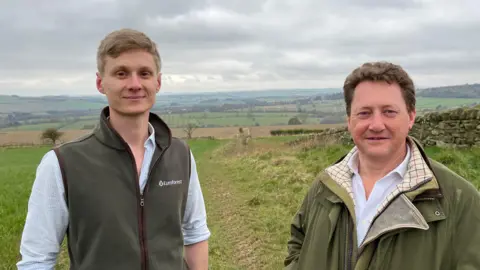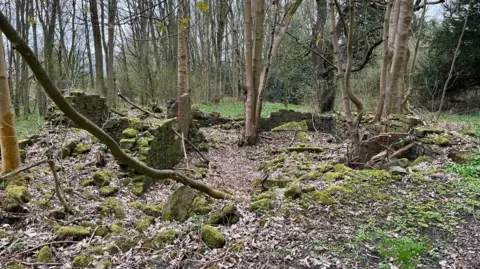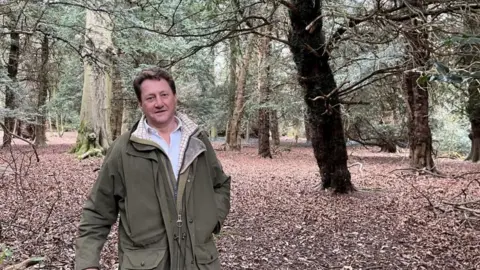Wildlife hopes for new 600,000-tree forest
 BBC
BBCThe company planting a new, 600,000-tree commercial forest says it wants to improve wildlife habitats, open land up to the public and capture carbon.
Part of the former Greencroft Estate in Lanchester, County Durham, is to be turned into a 300-hectare (741-acre) woodland producing timber for the construction industry.
True North, the investment firm behind the plans, claimed the project will also give locals access to five miles of walking and cycle paths.
Greencroft Forest Park designer Sam Roberts, from Euroforest Silviculture, said the scheme will allow a number of habitats to be developed to attract amphibians, birds and potentially red squirrels.
The land was previously a private estate which had been abandoned and fallen into ruin.
Greencroft Hall was demolished but sections of its remains have been granted listed status and will be preserved, the owners said.

True North's chief executive Harry Humble said the afforestation scheme "will be mixed forest of both commercial timber and native broadleaf planting, with a big element of public access and new public access routes through it".
"The overall estate is some 1,400 acres and there are parts of the former Greencroft Hall, landscape gardens and parkland which we are not going to be planting for commercial forestry.
"There is really quite a strong heritage element within that, so we are hoping to bring all of those elements of the wider forest scheme into a leisure development as well."
True North's wider plans for the land include building 140 holiday cabins in the middle of the forest, but this part of the development has yet to receive planning approval.
'Carbon locked up'
The forest, close to urban areas, such as Anfield Plain, Stanley and Lanchester, will consist of 31 different species including conifers and broadleaf trees.
The primary species will be sitka spruce which grows quickly.
"Around half the weight of a piece of wood is carbon," said Mr Humble.
"With all the afforestation that is going to happen here between now and 2050 there will be tens of thousands of tonnes of carbon locked up in the trees."

Designer Mr Roberts said the scheme will allow the development of wet woodland, which he said is "one of the fastest declining priority habitats in the UK".
He plans to plant trees which enjoy saturated ground, such as willow.
"That will create nice ephemeral ponds for newts and other amphibians and fish species."
He further hopes red squirrels will return to the area because their main rivals, grey squirrels, cannot live in sitka spruce trees.
"We can plant the trees here and hope that, should expansion efforts for the red squirrel populations go well, there will be a forest ready for them to move into which will not be populated by grey squirrels," he said.
With Lanchester liable to flooding, it is also hoped that planting on previously unobstructed farmland will improve flood mitigation.
True North has been involved in a number of forest creation projects in the UK, including a controversial scheme in Stobo in Scotland.
Herbicides have been used on steep sections of the land but objectors argued this was not made known to the public before permission was granted.
Last year, Scottish Forestry ordered True North to cease planting trees in Stobo while it reviewed its original screening decision.
True North said some herbicide may be used as weed deterrent at Greencroft Forest Park but would not be used in the land preparation on site.
"All UK commercial forestry uses some herbicides, often to protect sapling trees in their infancy," the company said.
